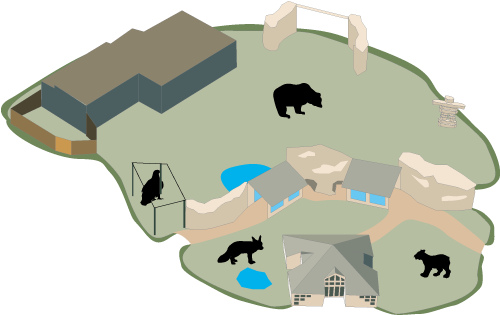Polar Bear
Ursus maritimus
Scientific Name
Polar Bear:
Ursus maritimus
Distribution and Habitat
Geographic Range
The polar bear can be found in five nations throughout the Arctic including Canada, Russia, Greenland, Norway, and USA [Alaska]. Their range is decreasing due in large part to the rapid loss of sea ice as the climate in their polar regions changes.
Natural Habitat
The polar bear frequents the ice pack covering the Arctic Ocean and nearby shores.
Physical Characteristics
-
The polar bear has black skin and is covered with a thick coat of fur that is actually transparent. It only looks white because of the way the hair reflects light. They have a 4.5” thick layer of fat under their skin. The polar bear is the largest bear in the world. Males may weight up to 1200+ lbs, but females are much smaller, usually ranging between 400 to 700 lbs. Adults are solitary except during the mating season or when a female has cubs. The polar bear has an extremely well-developed sense of smell and hearing.
Quick Facts
-
Polar bears may travel hundreds of miles to follow their food source.
-
Even though they eventually become one of the largest land carnivores, a newborn polar bear weighs only about a pound at birth. A liter usually consists of 1-3 cubs. The cubs typically stay with their mother until about 2.5 years of age.
-
Polar bears spend so much time at sea and on sea ice that they are considered marine mammals.




